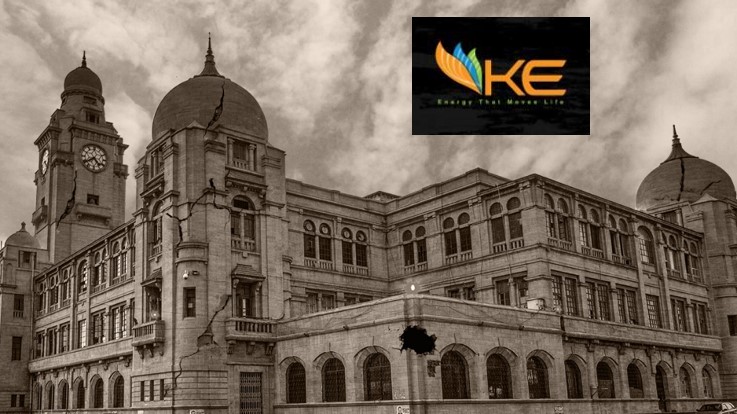According to a news report, the Sindh cabinet allowed the Karachi Metropolitan Corporation (KMC) to sign a memorandum of understanding (MoU) with the K-Electric authorizing the later to collect conservancy and fire taxes through electricity bills. The move is a follow-up of a meeting where the KMC Administrator Murtaza Wahab floated the notion to generate an estimated revenue of Rs 600 million per month from Karachi’s residents under the head of municipal taxes to be included in electricity bills.
Murtaza Wahab terms this idea as “revolutionary on” for KMC. Notwithstanding, major political parties in Karachi as well as civil society are opposing and criticizing the plan owing to the overall performance of the provincial government. Yet nobody questions about its practicability and feasibility. Obviously, it is to be questioned and envisioned first; can this idea be practically possible to implement in Karachi or not?
A Question of KMC Jurisdiction
According to the details, as disclosed by Chief Minister Murad Ali Shah, in order to increase the local revenue, the K-Electric will charge the Conservancy and Fire taxes from its 2.56 million consumers on behalf of KMC. He elaborated Rs 100 and Rs 200 would be charged respectively from the consumers in the K-Electric bill monthly. However, the fact is against the total 2.56 million K-Electric users in Karachi, the KMC has control nearly half of that figure i.e. 1.4 million registered users of Municipality Utility Charges Tax.
Why?
Former Mayor Waseem Akhtar once briefed in a meeting that after the SLGA 2013 only 12% land comes in the jurisdiction of KMC. Although, it could be an overstressing figure, but international institutions’ confirms nearly 33 to 34% area of the megacity is controlled by KMC and the rest is controlled by 12 other civic agencies that includes 6 Cantonments, industrial zones, DHA, CAA and etc. These agencies collect their own conservancy and municipal taxes and KMC have nothing to do with their revenue sources.
Even new real estate development in the city, the Bahria Town Karachi collects their own conservancy, municipal, fire taxes, even electricity and water bills, and KMC has nothing to do with that. Neither the Sindh Government has consulted nor taken all of them on board before floating the idea. Besides, would these civic authorities and land control agencies like to share their revenue with KMC or even with Sindh government through K-Electric Bills? It can be anybody’ guess.
Therefore the Rs. 600 million monthly revenue from Fire and Conservancy Taxes via K-Electric Bills is absolutely an exaggerating figure on behalf of Chief Minister of Sindh.
Sindh Local Government Act 2013
Also after the SLGA 2013, the Sindh government has taken away the functions of municipal waste management from KMC and given to newly formed Solid Waste Management Board. The Board now control city’ waste collection as its Act states “The Board shall have the right over the solid waste related issues, assets, funds and liabilities of the Councils and shall possess sole rights on all kinds of solid waste within the limits of all Councils”. Solid waste could be good source of revenue but KMC was deprived from it.
The Sindh government also has control over the property tax, which is enormous source of revenue. As an example the Sindh Excise and Taxation Department collects property tax from all cities of Sindh. According to official statistics in the financial year 2021, the Sindh Excise and Taxation Department totally collected Rs. 1.679 billion from Karachi, Hyderabad, Sukkur, Mirpurkhas, Benazirabad and Larkana, in which Karachi’ share is Rs. 1.52 billion alone.
Other KMC’ Sources of Revenue
However, without stirring the above sources of collection including fire and conservancy taxes, there also many other venues for revenue which have been overlooked by Murtaza Wahab. If he brings only transparency and stop financial leakages in these venues, KMC can generate a sizable revenue to runs its functions smoothly.
- Land Control – Although it comes in provincial government domain but KMC still get fees of Sub lease, Transfers, Mutation, Maps of lands, NOCs, Permissions in his jurisdiction.
- Recreation Fees – KMC can get millions of rupees from amusement parks, Safari Park, Zoo through annual tenders and rent from Shops; just fairness and transparency is needed.
- Medical and Health Licenses – Murtaza Wahab didn’t mention that, but it is a powerful source as thousands of doctors pay that fee for renew and new licenses.
- Charge Parking – No need to say about that, it is already paid by citizens daily with or without consent of KMC.
- Slaughter Houses – Again, it is a big source of revenue as millions of animals are slaughtered daily and KMC just need to make this collection transparent.
- Graveyards – Nothing to say about it as everyone knows the amount to get space for a grave. KMC just has to make this process free from corruption.
Hope this write-up serves as an eye-opener for Murtaza Wahab.
By
Editorial, Infocus


